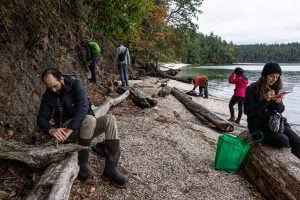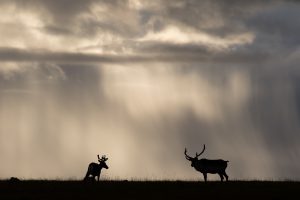
Environment
The sixth extinction
The planet is in the midst of drastic biodiversity loss that some experts think may be the next great species die-off. How did we get here and what can be done about it?
- 4895 words
- 20 minutes
Wildlife

The populations of species at risk in Canada have declined on average by almost 50 per cent since 1970.
That’s the finding of WWF Canada’s Living Planet Report Canada 2020. Three years after the organization’s last report, the numbers are staggering and, to lead author James Snider, show there’s a lot more work that needs to be done.
“Canada is not exempt from the global extinction crisis. The report shows that our species at risk nationally are facing five threats on average,” says Snider, WWF Canada’s vice-president, science, research and innovation. “That indicates that much more needs to be done if we’re going to safely steward, and in some cases restore, these wildlife populations.”
Populations of endemic Canadian species at risk have dropped by an average of 59 per cent and species at risk globally have had their Canadian populations fall by an average of 42 per cent.
WWF worked closely with the Zoological Society of London to analyze records and come up with new methodologies to collect and understand data for the report. What it shows is that wildlife populations are now facing multiple threats — which Snider says need to be addressed concurrently.
“This is especially true as climate change is becoming a core threat,” says Snider. “We need to tackle climate change and biodiversity loss at the same time.”
One strategy in place to halt the decimation of wildlife habitats is creating protected areas, which Snider calls the “cornerstone of conservation.” The government of Canada has committed to protecting 25 per cent of land and waters by 2025.
“That’s an ambitious goal,” notes Snider. “One they should be applauded for. But we also need to make sure those protected areas are done in a way that maximizes their benefit for species at risk.”

Broad-scale restoration practices are another strategy for protecting wildlife and their habitats, especially in southern parts of the country. According to Snider, these efforts should also benefit people, such as water purification or flood prevention measures.
“The most important piece in advancing both of those strategies is there needs to be a role for Indigenous leadership,” says Snider. “For conservation in Canada to be effective, it needs to be both equitable and just. For that to occur, we’re going to [rely on] significant leadership from our Indigenous communities.”
Still, Snider believes the report should be a “wake up call” for everyone to do more, faster — and that we all have a responsibility to be stewards for wildlife and their habitats, right in our own backyards.
“Otherwise,” he says, “we genuinely face the loss of wildlife populations in Canada and in some cases the global extinction of those species as well.”
Are you passionate about Canadian geography?
You can support Canadian Geographic in 3 ways:

Environment
The planet is in the midst of drastic biodiversity loss that some experts think may be the next great species die-off. How did we get here and what can be done about it?

People & Culture
Naming leads to knowing, which leads to understanding. Residents of a small British Columbia island take to the forests and beaches to connect with their nonhuman neighbours

Wildlife
An estimated annual $175-billion business, the illegal trade in wildlife is the world’s fourth-largest criminal enterprise. It stands to radically alter the animal kingdom.

Wildlife
After more than a million years on Earth, the caribou is under threat of global extinction. The precipitous decline of the once mighty herds is a tragedy that is hard to watch — and even harder to reverse.